Carpenter Bee Control
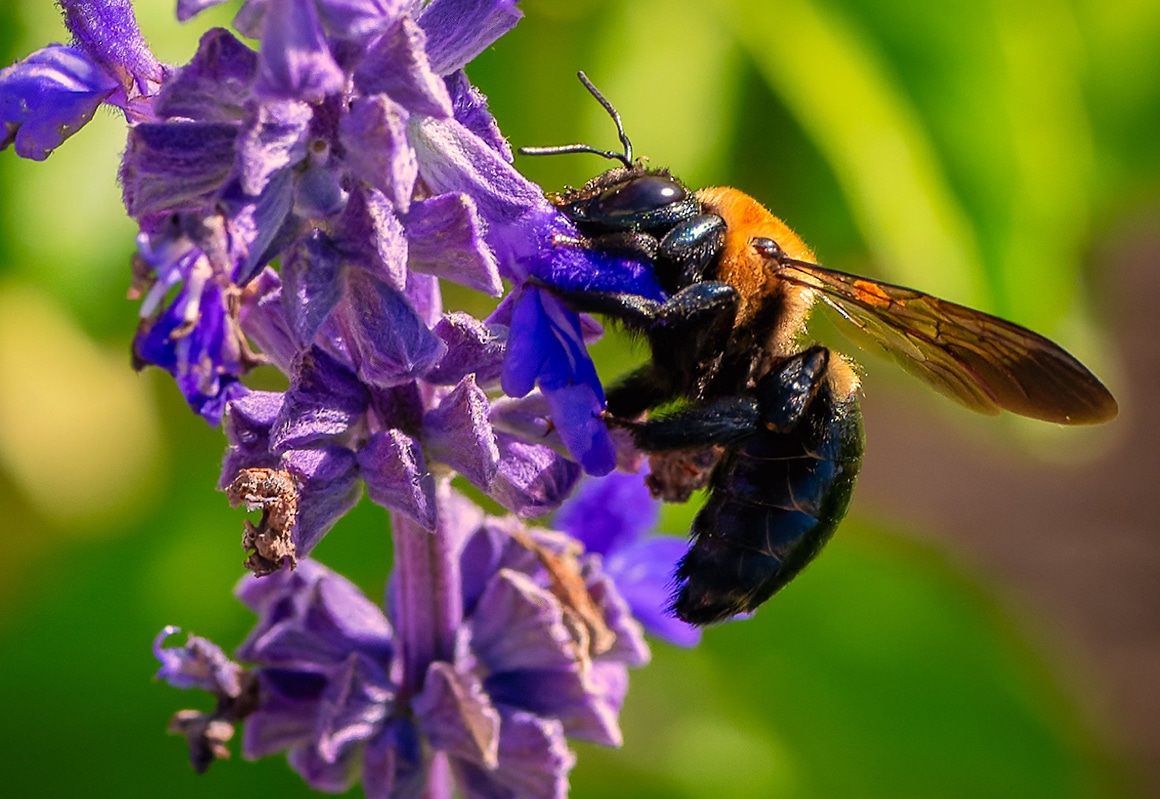
If you live in North Carolina or South Carolina, you’re likely no stranger to pests. But while some pests threaten your health and safety, others attack the integrity of your property instead. Carpenter bees are the second kind.
Carpenter bees are also common across the Carolinas and easy to overlook until the damage is done, so it’s essential to know what to watch for. The sooner you reach out to an experienced carpenter bee exterminator for help, the better.
Anticimex Carolinas is proud to be the Carolinas’ trusted solution for a comprehensive range of pest solutions, including safe, effective carpenter bee control.
Get a Free Pest Control Quote
What Are Carpenter Bees?
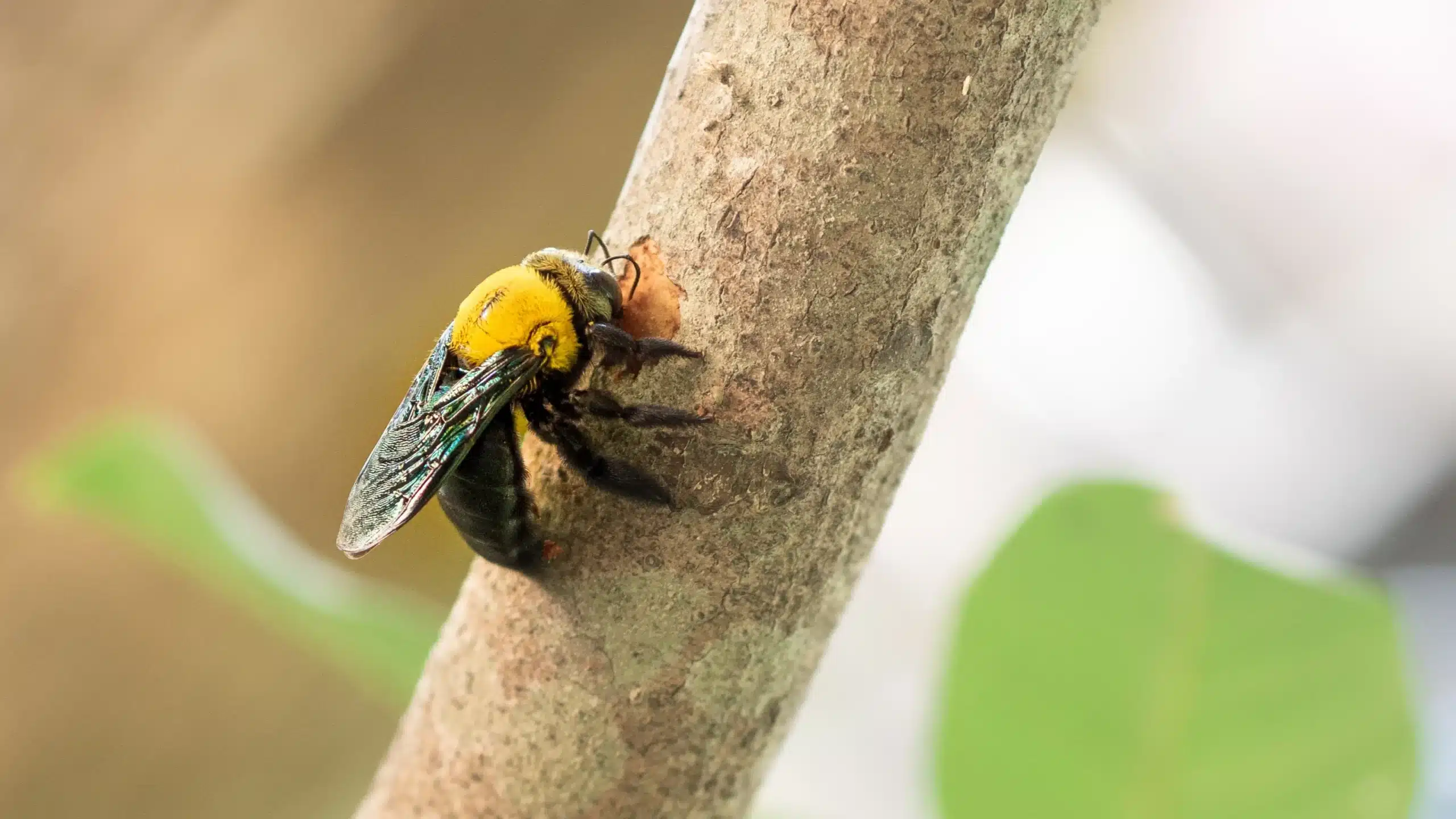
Commonly mistaken for bumblebees because of their size and shape, carpenter bees are a large species of bees common across many parts of the United States, particularly the southern and southeastern states. However, while bumblebees have fuzzy abdomens, carpenter bees have hairless, shiny ones instead.
Carpenter bees are more solitary than other types of bees but can still display territorial behavior under the right conditions. Males do not sting, although they’ve been known to hover persistently near people who come too close. Females can sting, but usually only do so if provoked.
Carpenter bees are so named because they don’t live in hives. Instead, they burrow into bare or exposed wood to create egg galleries for hatching and sheltering their young.
How Big a Problem Are Carpenter Bees in the Carolinas?
Since carpenter bees don’t swarm or form huge hives like other bees, spotting one or two on your property might not seem like a big deal. But they can still spell trouble for your Carolina home or business, especially over time. Here’s how:
- Carpenter bee tunnel systems weaken the integrity of your property, especially over time, eventually leading to expensive repairs.
- The accumulated effects of visible entry holes and sawdust (sometimes called frass) can ruin the look and feel of wooden buildings and structures.
- Wood compromised by carpenter bee tunnels is susceptible to moisture intrusion, wood rot, and similar issues.
- Secondary damage often occurs when woodpeckers and other birds start pecking at affected wood to access hidden larvae and eggs.
- Many bees return to the same locations year after year, adding onto existing tunnel systems and creating new damage each time.
If you suspect carpenter bees have invaded your property, don’t wait for the problem to escalate. The sooner you implement a good carpenter bee treatment regimen, the better
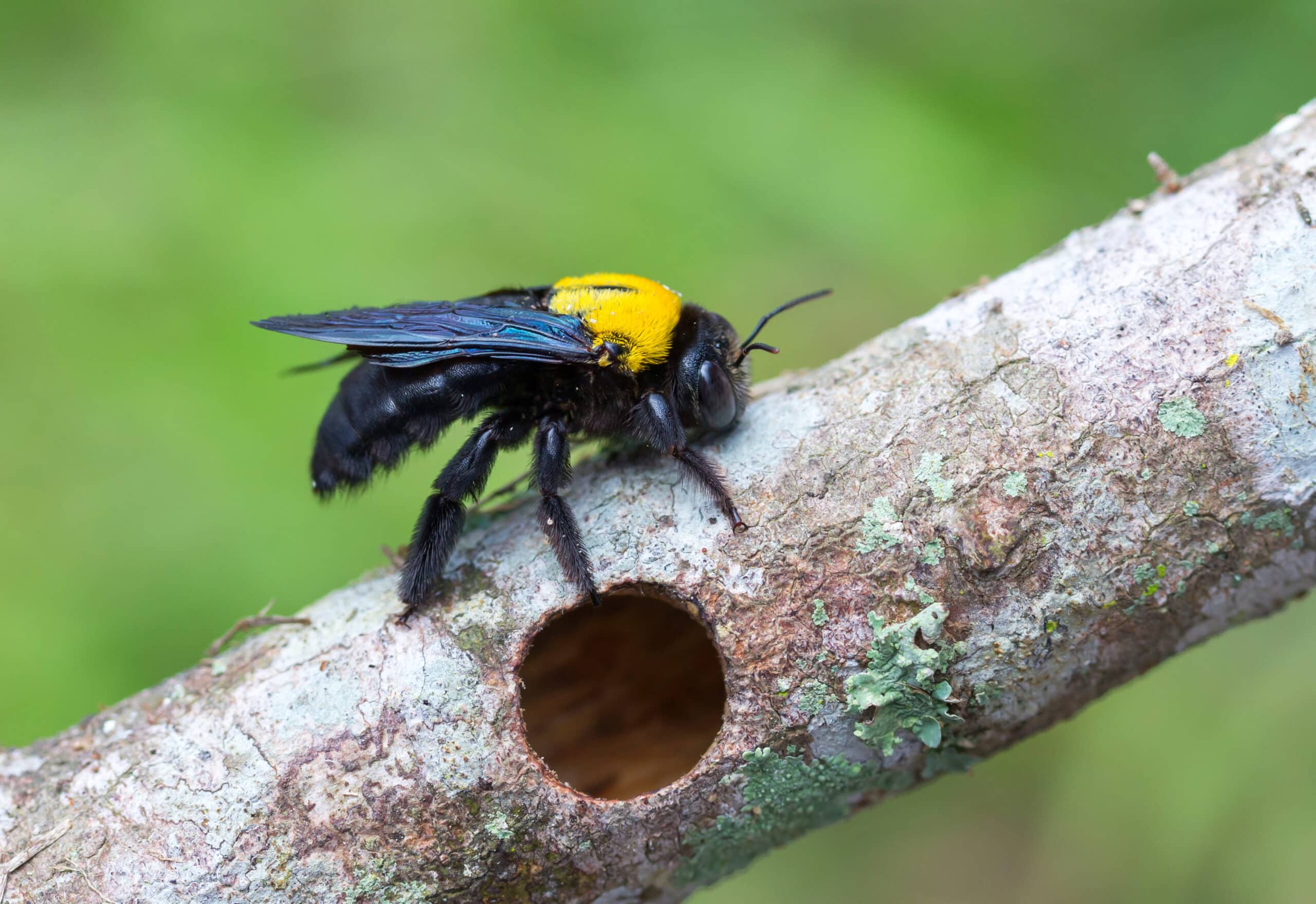
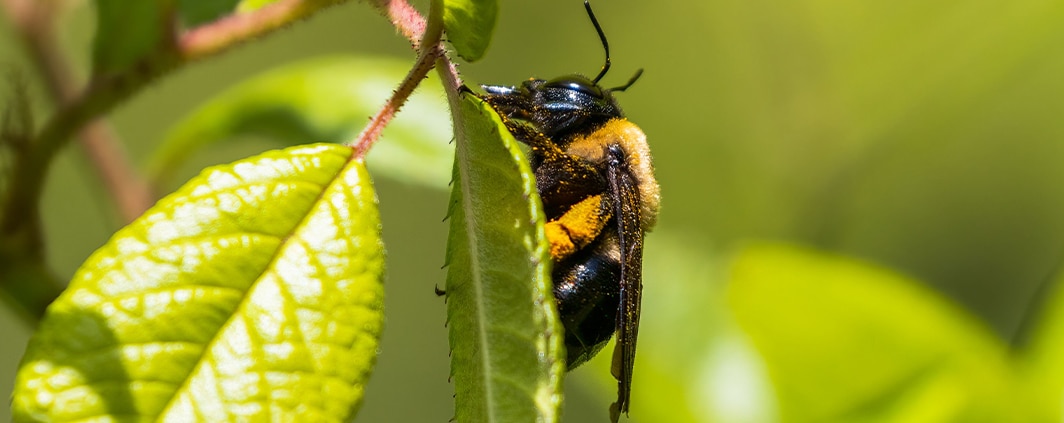
What Are the Signs of Carpenter Bee Activity?
Since carpenter bees are easy to mistake for other species, it’s a good idea to know what to look for, especially if you live in an area where infestations are common. Here are some telltale signs to be aware of:
- Perfectly round holes in wooden surfaces on your property (most are about the size of a dime)
- Unexplained sawdust accumulation near holes in wood or underneath wooden property features
- Yellowish staining around holes in wood (from elimination of bee waste)
- Frequently seeing large bees darting, buzzing, or hovering near wooden property features or trim (e.g., wooden rafters or eaves)
- Lots of woodpecker activity on or near your property (as the birds like to feed on bee larvae)
If you’ve been noticing one or more of the above around your home, business, or other Carolina property, you’re looking at a potential carpenter bee problem. The carpenter bee control experts of Anticimex Carolinas can help you confirm and move forward with a safe, effective treatment strategy.
How Anticimex Carolinas Approaches Carpenter Bee Control
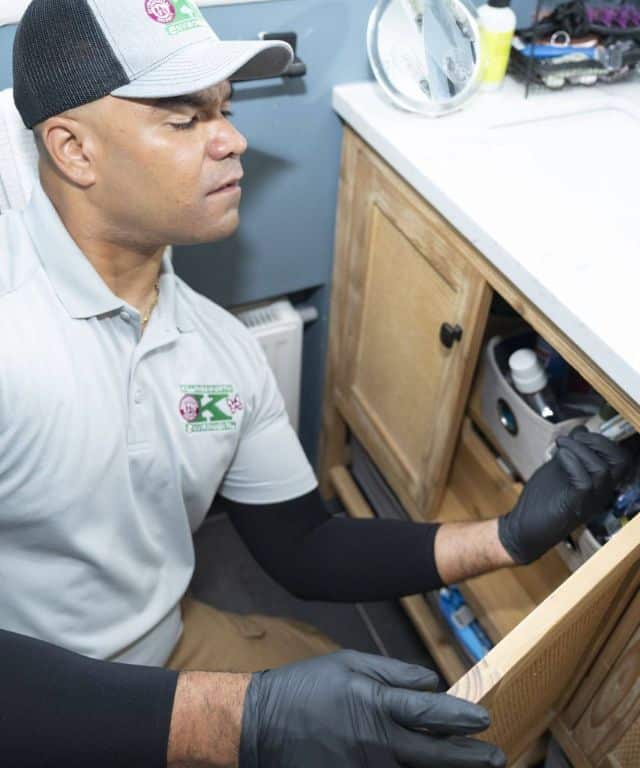
Anticimex specializes in safe, thorough pest control treatments that not only eliminate existing problems but prevent them from coming back. Here’s a closer look at what sets us apart from everyone else.
Environmentally responsible treatments
Many people are hesitant to call in a professional exterminator to deal with carpenter bees or other pests due to health concerns. They worry about harsh treatments and products that could jeopardize their health, impact non-target species, or otherwise harm the Carolinas’ beautiful ecosystems.
With Anticimex in your corner, you can finally put those worries to bed. Our carpenter bee control techniques, products, and prevention strategies are safe, effective, and environmentally conscious. Get rid of carpenter bees. Keep your health and your peace of mind.
Thorough inspections and custom treatments
Every Anticimex treatment strategy starts with a thorough inspection of your home, business, or other property. The goal is to identify every active carpenter bee nesting site and potential access point. We also evaluate your property for existing signs of repeat infestation and associated structural damage.
From there, we design a comprehensive carpenter bee treatment and prevention strategy with your unique needs, property, and pest control goals in mind. (Please note that we only treat carpenter bee infestations at safely accessible ground-level locations.)
Responsive service and comprehensive expertise
At Anticimex Carolinas, we don’t just know carpenter bees and other pests. We understand how they affect homes and businesses across North and South Carolina, and we leverage that expertise to protect our clients. We also understand that active pest control issues should be addressed as soon as possible, so we always promptly respond to calls and potential infestations.
And we help with a lot more than carpenter bees. Turn to Anticimex for a complete range of safe, efficient pest control options you can trust with your property. Schedule your consultation today!
Frequently Asked Questions
Do Carpenter Bees Sting?
Female carpenter bees can sting, but they are generally non-aggressive and rarely do unless provoked. Males often appear more intimidating as they hover near people, but they cannot sting at all.
What Do Carpenter Bees Eat?
Carpenter bees eat nectar and pollen from flowering plants. They are pollinators and rely on flowers as their main food source. Despite boring into wood to build their nests, they do not eat wood.
Do Carpenter Bees Make Honey?
No, carpenter bees do not make honey. Only honeybees produce honey and live in colonies. Carpenter bees are solitary and use chewed wood to build nests, not for storing honey.
Why Do Carpenter Bees Hover?
Male carpenter bees hover to protect their territory and attract females. You might see them darting around doors, decks, or eaves—especially in spring. Though it may seem aggressive, they’re just posturing.
Do Birds Eat Carpenter Bees?
Yes, some birds do eat carpenter bees—especially woodpeckers. In fact, woodpeckers are a common secondary pest, often damaging wood even further while trying to extract carpenter bee larvae.
